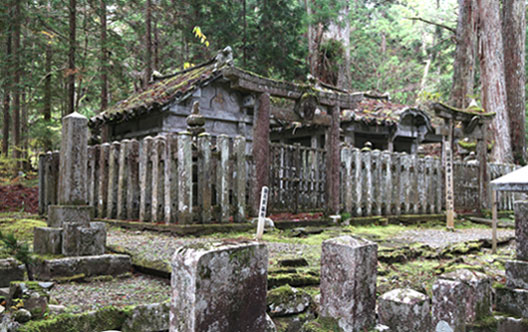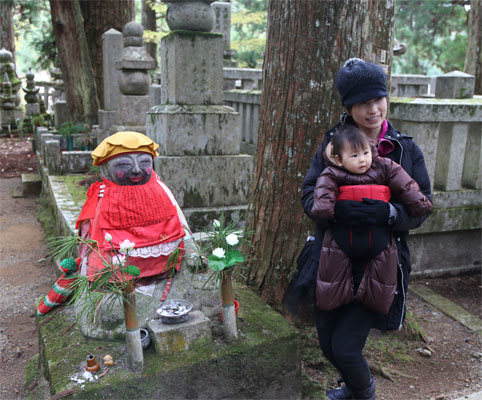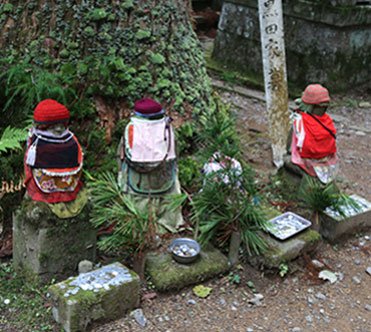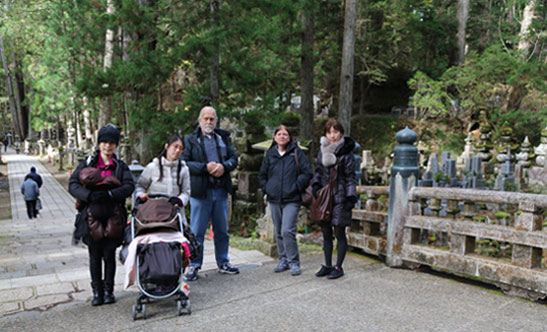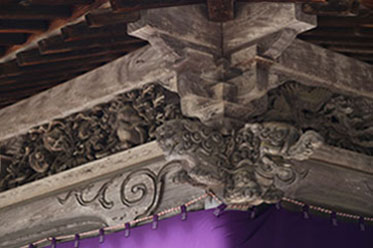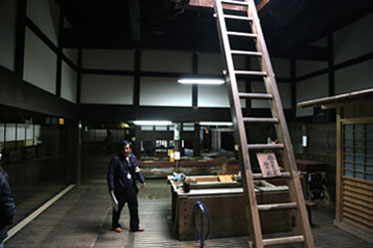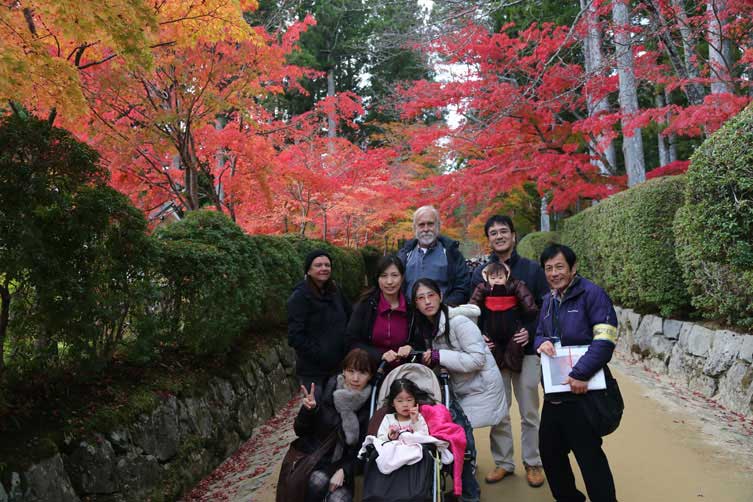Childhood Dreams
Mount Koya
It started with an email from our friend Yoshimi. She wrote that she and her husband Hiro would like
to spend time with us during our stay in Osaka, and she suggested that we either visit Osaka Castle or
Mount Koya. I had been toying with the idea of revisiting Osaka Castle since we know a lot more about
Japanese history now than we knew in 2005, but the thought of venturing to Mount Koya was irrestible.
It takes about 2 hours to travel from Osaka to Mount Koya. On the morning of the trip, Yoshimi and her
adorable daughter Miho picked us up at our hotel in a taxi. We rode to the train station where we met
Taeko, Wakana, and Taeko's sister Izumi. Hiro had to attend to a patient in the morning, but he was able
to join us later at lunch.
We rode on the train for about an hour and a half, and then we transfered to a cable car which went
pretty much straight up a mountain. Next, we boarded a bus which went slowly up a steep road with
one sharp hairpin turn after another. We finally disembarked at Okunoin where we met the English
speaking guide who would accompany us.
The guide was extremely pleasant, and his English was excellent. His first action was to gather
everyone's cameras and to take a picture of the group with each one.
The statue in the picture on the right stands near the entrance to Okunoin.

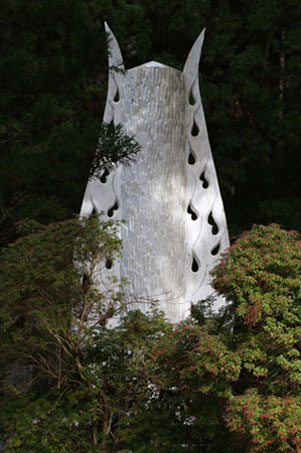
Okunoin is often called a cemetery, but I think of it as more of a memorial park. It is my understanding
that this is not a place where bodies or ashes have been interred. It is instead a place where gavestones and
memorial pagodas have been errected to honor the memories of the dead.
Over 200,000 statues and memorials are crowded amongst giant centuries-old cedar trees.

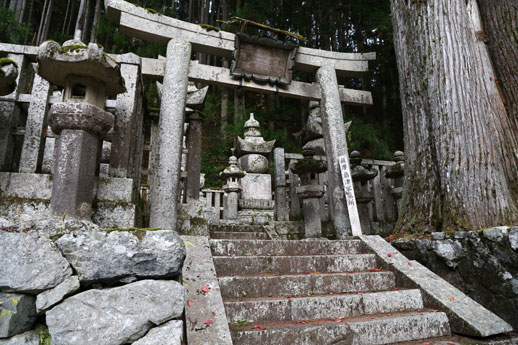

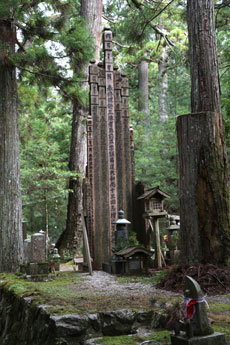

A path winds past the memorials for about 2 km, eventually reaching the Ichinohashi Bridge which leads to the
mausoleum of Kobo Daishi, founder of the Shingon sect of Buddhism.
Kobo Daishi was born in 774 on Shikoku Island. His teachings were influenced by his study of esoteric Buddhism in China. The settlement at Mount Koya
fulfilled his desire to establish a monastery deep in the mountains where monks could pray for peace and the welfare of the people without wordly
distractions. Mount Koya was a desirable site because it is a highland valley surrounded by 8 low peaks bringing to mind a lotus flower surrounded by
8 petals.
Kobo Daishi is also credited with many scholastic and engineering accomplishments including the development of the kana system of writing and the construction
of the Manno Reservoir which is still the largest irrigation reservoir in Japan.
It is believed that Kobo Daishi did not die. Instead, he entered a state of eternal meditation. Twice a
day, meals are ritually offered to him at the mausoleum.






It was very peaceful under the towering trees, and the air was brisk with a sharp scent of evergreens.
Some of the statues had interesting stories. It is said that if you pray to this statue, you will become
beautiful. Yoshimi and Miho posed by the statue although they are already beautiful.
The picture below on the left is of a collection of 5 tiered Stupa. This represents the 5 elements taught in
Buddhism - Space, Wind, Fire, Water, and Earth.
We reached the bridge that leads to the mausoleum. Picture taking is not permitted inside.
After emerging from the mausoleum, we entered a section of Okunoin where companies have erected monuments so of
course I took a picture of the one provided by my former employer, Nissan.
Yoshimi's husband Hiro joined us for lunch, and then we toured Kongobuji Temple, the Headquarters of Koyasan
Shingon-shu Buddhism. Construction of the original building was ordered by Toyotomi Hideyoshi in 1593 to
commemorate the death of his mother.
After entering the building, we passed some rooms with beautiful screen
paintings, but photography was not permitted.
Next we entered a large tatami hall where we enjoyed a biscut and a cup of tea.
The picture on the bottom row right side is taken in the kitchen which has a huge hearth and stoves large enough to feed up to 2000
people
There is also an impressive rock garden here called Banryutei. The design represents a pair of dragons
emerging from a sea of clouds to protect the Okuden.
The pagoda pictured below is called Konpon Daito. It was the original center of the complex. Today it
houses a statue of the Buddha Mahavairochana.
Near the Konpon Daito is an area with many fascinating old structures. These are some of them.
Sadly, the day was drawing to a close so we asked a passing stranger to take a photo of our group below
the colorful autumn leaves.
Then it was back to Osaka and a delightful okonomiyaki dinner with Yoshimi, Hiro, and Miho.














